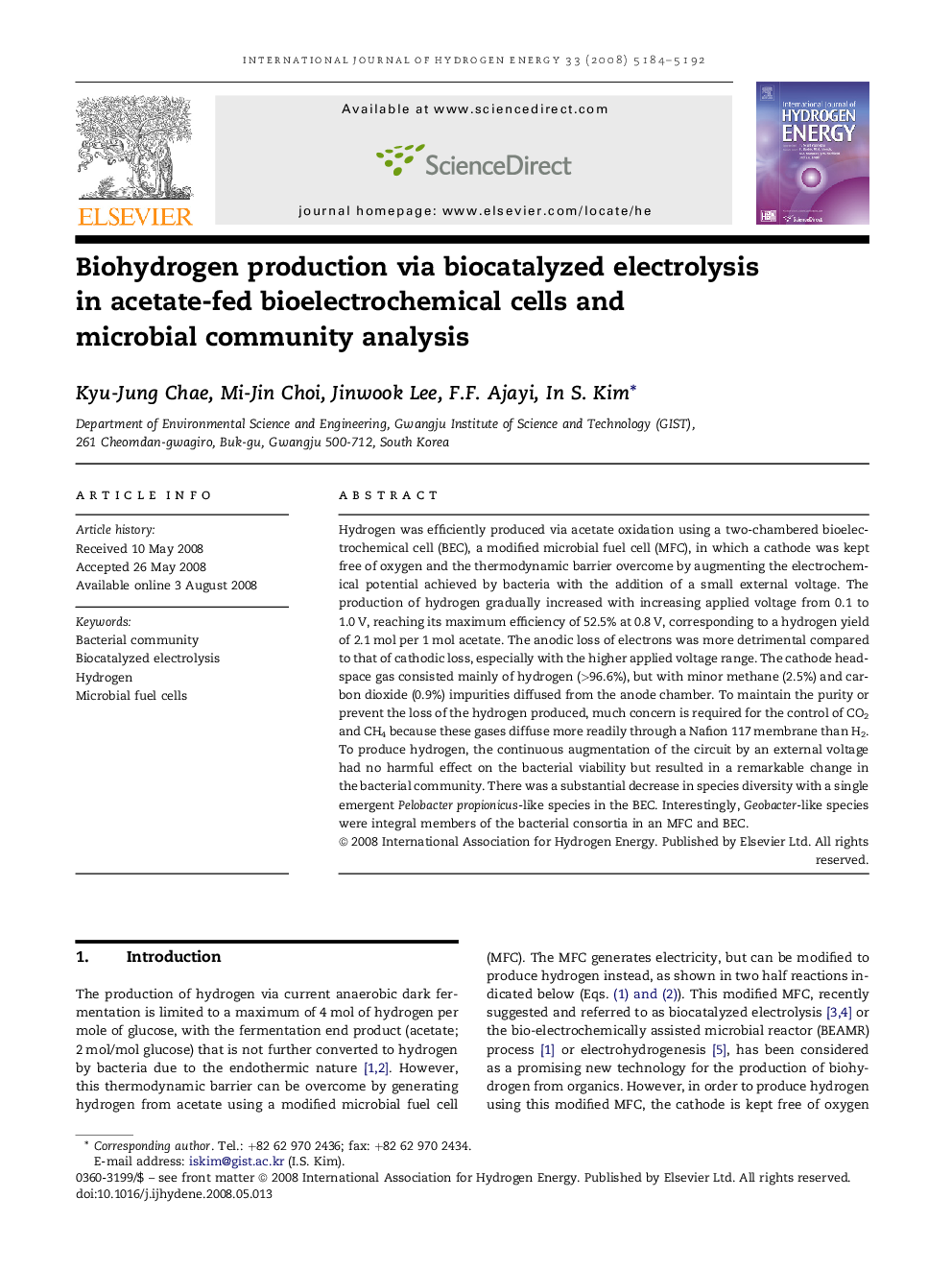| Article ID | Journal | Published Year | Pages | File Type |
|---|---|---|---|---|
| 1281434 | International Journal of Hydrogen Energy | 2008 | 9 Pages |
Hydrogen was efficiently produced via acetate oxidation using a two-chambered bioelectrochemical cell (BEC), a modified microbial fuel cell (MFC), in which a cathode was kept free of oxygen and the thermodynamic barrier overcome by augmenting the electrochemical potential achieved by bacteria with the addition of a small external voltage. The production of hydrogen gradually increased with increasing applied voltage from 0.1 to 1.0 V, reaching its maximum efficiency of 52.5% at 0.8 V, corresponding to a hydrogen yield of 2.1 mol per 1 mol acetate. The anodic loss of electrons was more detrimental compared to that of cathodic loss, especially with the higher applied voltage range. The cathode headspace gas consisted mainly of hydrogen (>96.6%), but with minor methane (2.5%) and carbon dioxide (0.9%) impurities diffused from the anode chamber. To maintain the purity or prevent the loss of the hydrogen produced, much concern is required for the control of CO2 and CH4 because these gases diffuse more readily through a Nafion 117 membrane than H2. To produce hydrogen, the continuous augmentation of the circuit by an external voltage had no harmful effect on the bacterial viability but resulted in a remarkable change in the bacterial community. There was a substantial decrease in species diversity with a single emergent Pelobacter propionicus-like species in the BEC. Interestingly, Geobacter-like species were integral members of the bacterial consortia in an MFC and BEC.
